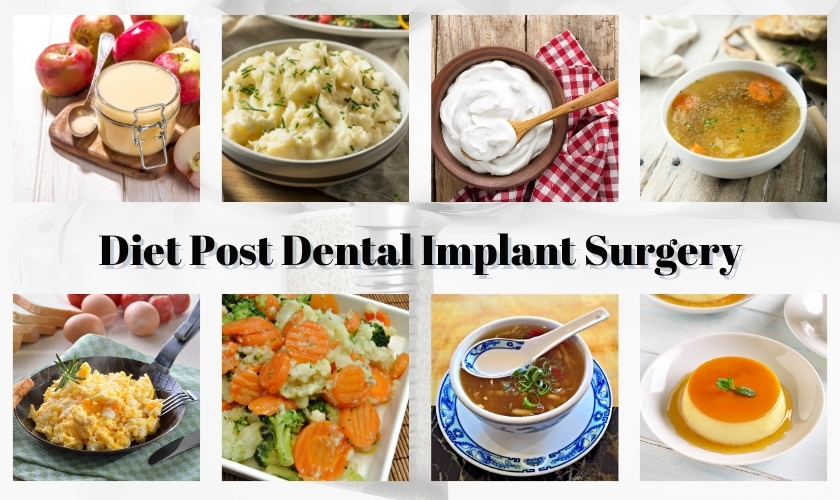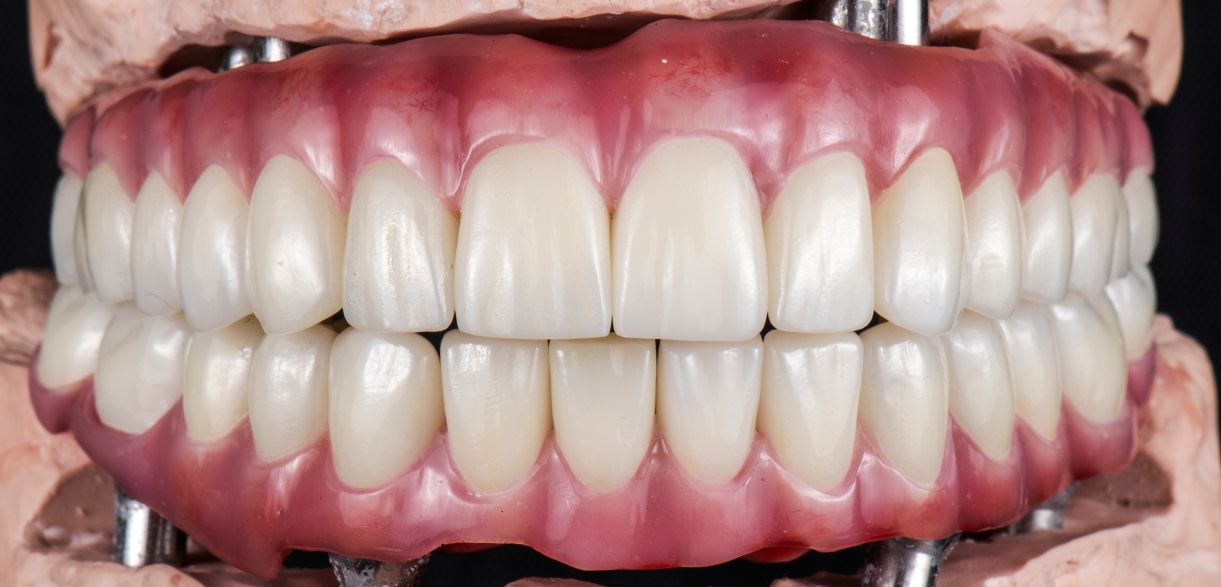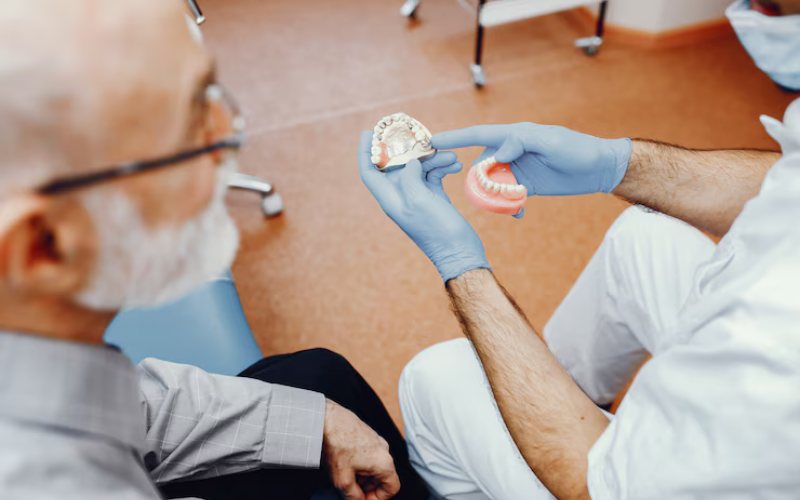
Dental implant surgery requires proper post-operative care to ensure a smooth recovery process. After the surgery, hunger may be one of the initial sensations experienced due to the need to abstain from food consumption for approximately six hours before the procedure.
Since chewing ability is temporarily impaired following the surgery, it’s strongly advised to follow a soft foods diet for at least 10 to 14 days post-surgery, or until any tenderness in the mouth subsides. It’s essential to identify which foods are suitable for consumption during this period and which ones should be avoided. Here are ten meal ideas tailored for the post-surgery recovery period:
1. Applesauce
Applesauce is a smooth mixture of apples that can be prepared with or without peeling, as well as flavored with spices or sweeteners. This budget-friendly food is popular in North America and parts of Europe, especially among individuals recovering from oral surgery. Its soft, gentle, and nourishing nature makes it an ideal choice for postoperative diets.
2. Mashed Potato
People create mashed potato, often called mash, by mashing boiled or steamed potatoes, typically mixing them with ingredients like milk, butter, salt, and pepper to enhance flavor and creaminess. This favorite dish frequently accompanies main courses featuring meat or vegetables as a delicious side. Sometimes, lightly mashed potatoes may affectionately be called “smashed potatoes,” offering a slightly different texture and visual appeal while maintaining the comforting essence of this classic dish.
3. Yogurt
Yogurt is a dairy product crafted through the bacterial fermentation of milk. During this process, bacteria ferment the sugars present in milk, generating lactic acid. This lactic acid interacts with milk proteins, ultimately contributing to the distinctive texture and tangy flavor that yogurt is known for. While yogurt can be made from various types of milk, cow’s milk is the most prevalent choice for its production.
4. Bone Broth
Broth, also referred to as bouillon in French pronunciation ([bu. jɔ̃]), is a flavorful liquid derived from simmering meat, fish, or vegetables in water for a brief duration. This process extracts the essence and nutrients from the ingredients, resulting in a savory and aromatic broth. While broth can be enjoyed on its own, it is primarily utilized as a base for preparing a myriad of dishes, including soups, gravies, and sauces. Its versatility and rich flavor make it a staple ingredient in culinary creations across various cuisines.
5. Egg
Throughout millions of years, both humans and their hominid predecessors have been consuming eggs. Among the most popular eggs are those from birds, particularly chickens. In Southeast Asia, the practice of collecting chicken eggs for consumption dates back to around 1500 BCE. Eggs, being easy to digest and rich in protein, are a nutritious option post implant surgery. Combining eggs with vegetables to create an omelet can result in a wholesome and balanced meal.
6. Pudding
Pudding is a culinary delight that can be enjoyed in various ways. It can be relished as a delectable dessert, served after a satisfying main course, or savored as a savory dish, complementing the flavors of the main meal. For individuals with a new dental implant and a fondness for sweets, gelatin and pudding are ideal choices. These soft and scrumptious treats are not only gentle on the digestive system but also incredibly flavorful.
7. Scrambled Eggs
Scrambled eggs are a preparation consisting of eggs that are mixed, whisked, or beaten with salt, butter, oil, and occasionally other components, then cooked until they coagulate into curds. Mashed potatoes, scrambled eggs, and other foods with a soft consistency.
8. Ice Cream
Ice cream is a frozen dessert made typically from milk or cream, sweetened with sugar or a substitute, and flavored with ingredients like cocoa, vanilla, or fruits such as strawberries or peaches. Sometimes, food coloring and stabilizers are added to improve its appearance and texture. Its cold and smooth consistency makes ice cream an ideal option for consumption after implant procedures.
9. Cooked Vegetables
Cooked vegetables are a recommended option following dental implant procedures. By cooking vegetables until they reach a soft texture, they become easier to chew and gentler on the mouth, thus reducing discomfort during the recovery period. Additionally, cooked vegetables retain their nutritional value, providing essential vitamins, minerals, and dietary fiber necessary for healing and overall health. Incorporating a variety of cooked vegetables into meals can ensure a well-balanced diet while promoting optimal recovery after dental implant surgery.
10. Soups
Soups and broth are highly recommended options for consumption following dental implant surgery. In the initial stages of recovery, thinner, broth-like soups are preferable as they are easier to consume and gentle on the healing tissues. As the recovery progresses, typically after about a week, transitioning to thicker soups such as stew and chili can provide added variety and satisfaction while still ensuring ease of consumption. These soups not only offer hydration but also supply essential nutrients and can contribute to a well-rounded postoperative diet.
If you encounter pain or observe your implants becoming loose, we advise promptly seeking assistance from the closest emergency dental care facility. Our dental clinic in Cincinnati, OH is equipped with a team of highly skilled professionals, led by Dr. Manju Kejriwal, DDS, FICOI, known for delivering exceptional dental care.





